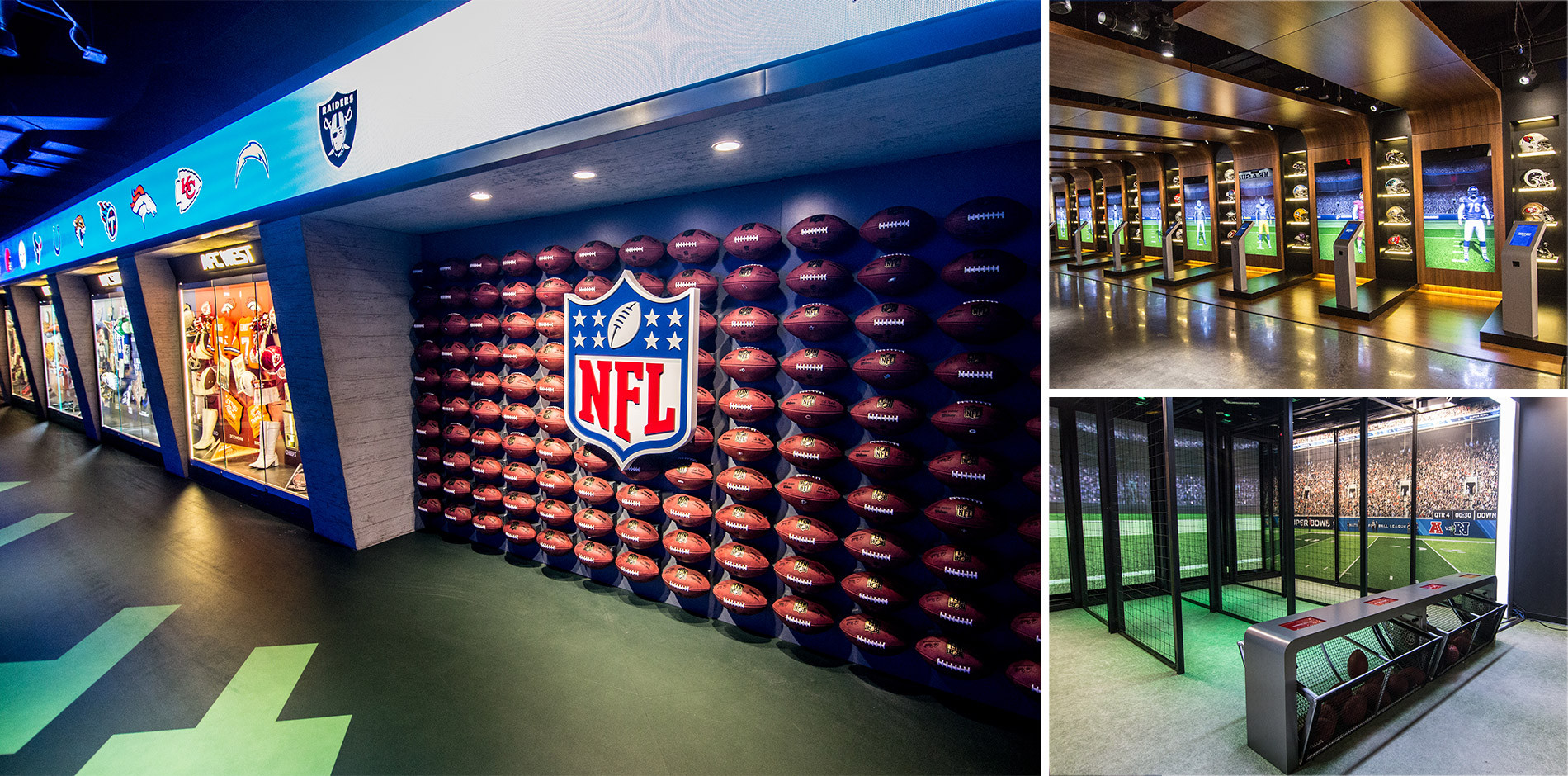Excerpt from Construction Dive
Nestled in the heart of New York City sits the metropolitan hub's famed Times Square. Constantly in motion, the area sees an estimated 26 million people each year and offers an array of experiences designed to suit nearly every visitor.
On Thursday, Times Square will add one more tourist attraction to its portfolio—the NFL Experience. The attraction is a partnership between Cirque du Soleil, which produces and operates the attraction, and the NFL, which co-created the immersive elements.
The project is an exemplar of the growing experiential retail trend, a pattern brought on by the advent of e-commerce that has left fewer shoppers visiting brick-and-mortar stores. Retailers, finding themselves at a crossroads, have turned to more hands-on ways to attract more customers. Simply put, retailers are betting the experience, rather than the physical commodities a consumer can purchase, are what will drive individuals to stores.
Though the NFL Experience is what may ultimately lure people to this new attraction, onsite retail, food and beverage vendors also stand to benefit from the attraction's foot traffic.
But before the experience could get off the ground, Boston-based Shawmut Design & Construction had to figure out how to produce and work with previously unfamiliar technical elements—and how to do so in the middle of New York City.
Randy Shelly, Shawmut's vice president of hospitality, says the firm ultimately won the project not only because of its experience and skill sets, but because of its familiarity with the nuances of building in Times Square, one of the nation's most challenging construction environments.
Logistically, the project required significant up-front planning and clear communication with the 42-story New York EDITION hotel base building. "All of the authorities having jurisdiction, including the NYC Department of Buildings and New York Fire Department, have enabled us, for the most part, to execute with limited disruption," Shelly said.
Inconveniences such as redirecting pedestrians, closing lanes and sidewalks and deliveries were planned well in advance. In all, it took 12 weeks of careful planning before construction even started.
The 38,000-square-foot attraction is housed in a 39-story, mixed-use high-rise. It includes a 188-seat, 4-D movie theater with motion-capable seats and weather effects that simulate NFL experiences from the athlete's standpoint. The space also hosts interactive exhibits and simulated training drills, including running back and tackle challenges and a touchdown dance photo op that can be televised on a 2,120-square-foot digital display in Times Square.
The project's success required immense coordination between all teams, including vendors, subcontractors and the base building landlord.
"Communicating early and often was key to keeping everyone on the same page while delivering on the most sophisticated and technologically challenging elements," Shelly says. "Creating a framework for easy collaboration made it possible for the collective teams to respond to unforeseen changes. It all comes back to communication."
